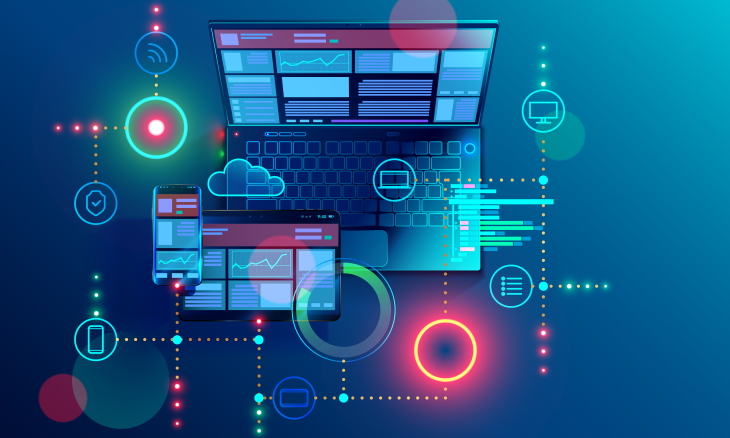
Sales forecasting is the process of predicting future sales based on historical data, market trends, and external factors, enabling businesses to plan inventory, budgets, and strategies effectively. In 2025, with industries like e-commerce, publishing, and vape retail navigating volatile markets, accurate forecasting is critical for optimizing resources and maximizing profitability. While powerful tools like Zoho Analytics and Tableau streamline predictions, challenges like data quality and market unpredictability require strategic approaches to ensure forecasts align with business realities.
The Significance of Sales Forecasting
Sales forecasting serves as a compass for businesses, guiding decisions in inventory management, marketing, and financial planning. For a vape retailer, forecasting demand for specific products ensures optimal stock levels, avoiding overstocking or shortages. In publishing, authors use sales forecasts to plan book launches, aligning marketing efforts with peak reader interest. By 2025, businesses leveraging data-driven forecasting report 10-15% improvements in operational efficiency, per industry studies.
This focus on strategic planning aligns with the user’s interest in polished product presentations, as accurate forecasts enable businesses to present their offerings at the right time and price. Forecasting bridges the gap between data and action, empowering businesses to anticipate market shifts and position their products, like books or vape devices, to capture demand effectively.
The Forecasting Process
The sales forecasting process begins with data collection, aggregating historical sales, customer behavior, and market trends. Tools like Tableau analyze patterns, such as seasonal spikes in vape sales during holidays, while external factors like economic conditions or competitor promotions are factored in. Quantitative methods, like time-series analysis, predict future sales based on past performance, while qualitative approaches, like expert opinions, add context for new products.
Machine learning models refine predictions, identifying correlations in large datasets, such as book sales trends on Amazon. Businesses set forecasting periods, typically monthly or quarterly, and visualize results through dashboards, ensuring clarity for decision-makers. Integration with CRM or e-commerce platforms, like Salesforce or Shopify, ensures real-time updates, aligning forecasts with current market dynamics.
Benefits of Sales Forecasting
Sales forecasting delivers measurable benefits. Accurate predictions optimize inventory, reducing carrying costs by 10-20%, as per industry reports. Financial planning improves, enabling businesses to allocate budgets for marketing or product development. Strategic marketing, informed by forecasts, targets peak demand periods, boosting sales for products like self-published books or vape kits.
Enhanced customer satisfaction comes from meeting demand consistently, resonating with the user’s interest in professional outputs. Scalability ensures forecasts adapt to growing businesses, while competitive insights, like monitoring rival pricing, refine strategies. These benefits make forecasting a cornerstone of strategic growth, enabling businesses to navigate market complexities with confidence.
Challenges and Solutions
Data quality is a primary challenge, as incomplete or inaccurate data skews forecasts, addressed by using robust platforms like Zoho Analytics with data cleansing features. Market unpredictability, such as sudden shifts in vape regulations, is mitigated by incorporating external variables and scenario planning. Resource constraints, particularly for small businesses, are managed through affordable tools like Excel or free-tier software.
Overly complex models risk misinterpretation, countered by simplifying outputs through intuitive dashboards. Human bias in qualitative forecasts is minimized by cross-referencing with quantitative data. These solutions ensure forecasts remain accurate and actionable, aligning with business objectives without overwhelming resources.
Future Trends in Sales Forecasting
AI will transform sales forecasting, enhancing predictive accuracy through advanced algorithms, as seen in tools like Salesforce Einstein. Real-time data integration with IoT devices, like smart inventory systems, will refine forecasts for retailers. Blockchain could secure sales data, ensuring transparency. Predictive analytics will target niche markets, aligning with the user’s interest in tailored presentations. These trends will make forecasting more precise and accessible, driving strategic growth across industries.
Real-World Impact
A vape retailer used Tableau to forecast holiday demand, stocking high-demand products and increasing sales by 15%. A self-published author leveraged Zoho Analytics to predict book sales, optimizing Amazon Ads and boosting revenue by 10%. These examples highlight sales forecasting’s ability to drive strategic decisions, ensuring businesses capitalize on market opportunities.
Conclusion: Navigating Markets with Precision
Sales forecasting empowers businesses to anticipate demand, optimize resources, and drive growth. While data and market challenges require careful navigation, advanced tools deliver actionable insights. As technology evolves, forecasting will become more predictive and scalable, enabling businesses to thrive in dynamic markets with precision and confidence.

